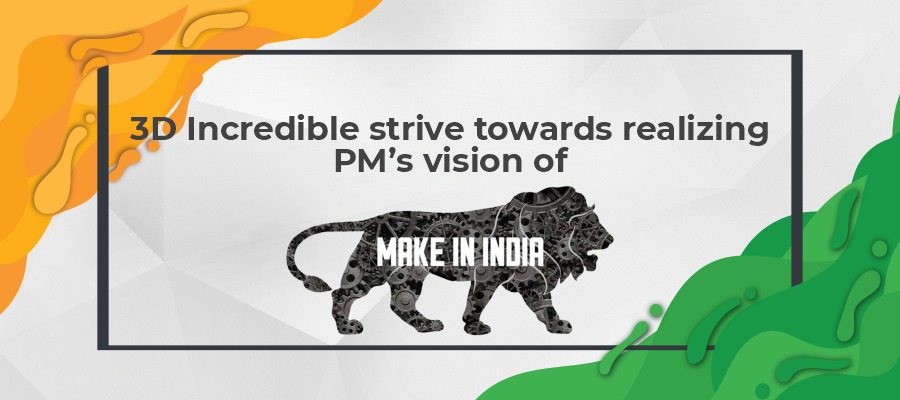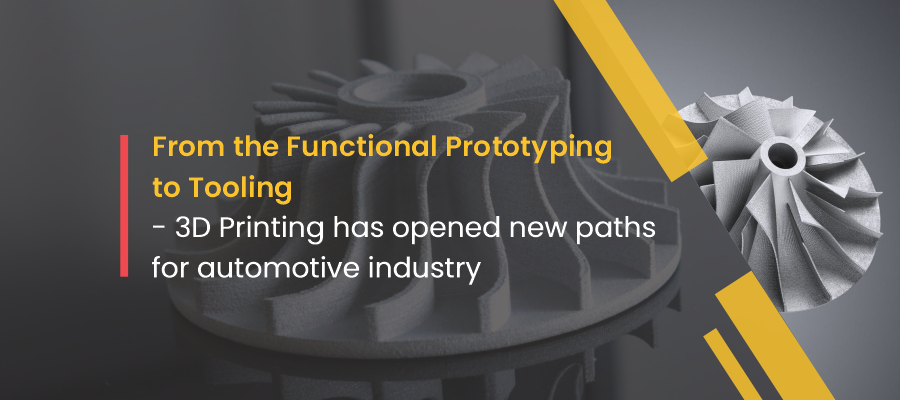Commercial travel and vehicle manufacturing is a heavy and factory-intensive industry. Even the smallest vehicle is a massive undertaking with tons of components, so one can imagine the number of parts involved in the manufacturing of massive airplanes or locomotives.
These vehicles are meant to operate indefinitely and over long periods of time. It implies that these vehicles are susceptible to massive wear and tear and its components getting damaged over the course of years. This problem requires an economical and quick solution to the problem of being reliant on far-off factories that could produce a single part which often results in long wait times, transport costs and supply-side price gouging.
3D printing or Additive manufacturing (AM) is an innovative and economical technology solving the above mentioned problems in a vehicle manufacturing and spare parts industry.
Let’s discuss in detail how three vehicle manufacturing industries aviation, automotive, and railways will get advantage by embracing 3D printed spare parts:
Aviation Industry
Aviation industry demands light weight, tough, strong and less quantity spares for maintenance of aircraft. The alloys like Aluminium, Titanium and Inconel have always been fulfilling these requirements. The use of conventional manufacturing processes to produce parts from this alloys doesn’t allow to use the material wisely as the topology optimised parts cannot be produced by conventional manufacturing techniques. Conventional manufacturing technique is not suitable economically to produce less quantity parts from these expensive alloys. 3D Printing technology which wins over all such challenges are been used by various air craft manufacturer and maintenance companies to produced light weight optimised parts from various super alloys.
– Additive manufacturing is a superior process than tooling, it allows manufacturers to reduce material waste and weight of a part produced due to integrated production of several parts. Reduced weight of spare parts will act as a fuel saving feature for the aircraft.
– Old spare parts which are no longer available for an aircraft can be produced by reverse engineering.
An example for the usage of 3D printing in aviation is by the US air force for their C-5 Super Galaxy aircraft by procuring their interior and cabin components.
Automotive Industry
With the large number of variants of two wheel, three wheel, four wheel and commercial vehicles by each automobile maker makes challenging task to provide spares to the customer throughout the life span of vehicle. This demands the large investment of time, money and man power in inventory management and manufacturing. The quick up gradation of car models by manufacturers results in modified spares for it making the old model’s spares obsolete. This makes the Garage and showroom owners huge loss preventing them to keep extra spares which effects when breakdown car comes to garage and then spare part is ordered to company leading to large time in vehicle repairing. 3D printing which enables manufacture on demand with vast material library is the best solution for such challenges. The digital CAD files of all the spares used in the any vehicle are always available with their respective manufacturer. This cad files can be used to print the parts at the directly to the customer, garage or showroom end without investing in large physical inventory and waiting for the parts after ordering. All the common Fe, Al and Ti alloys used in the car can be 3D printed. If one 3D printer is installed in every city, it can be used in sharing by all the automotive repair and spare shops to print the parts required for automotive maintenance and breakdown repair. Not only with maintenance and breakdown, this is also helpful for using the outdated vehicles model or vintage cars for their refurbishment and re use.
This will enable best and efficient use of 3D printing technology by Automotive firms for dealing with inventory related challenges.
Railway industry
Indian Railway is one of the largest industries in the world which has large number of locomotives, electrical, diesel engines, and carts. This large industry demands different spares every year for smooth operation of railways. The quantity of each spare required doesn’t fit in mass production method. These are needed either in batch or single quantity. 3D printing which is best suitable technology than casting and forging technology for less quantity production can be used wisely in this industry. The parts printed by 3D printing qualifies the various requirement of critical and heavy duty applications and perform superior compared to conventionally produced parts.
Conclusion
By embracing 3D printing, manufacturing industries can get great benefits and revolutionise the way they function. Incredible AM Pvt Ltd is an ISO9001, AS9100D and ISO13485 certified additive manufacturing facility in Pune India and successfully working with different such OEMs for catering spare part demands every year. The fleet of metal and plastic 3D printers backed up by advanced post processing and reverse engineering facility are driven by additive manufacturing experts to provide every solution in spare part requirement.




